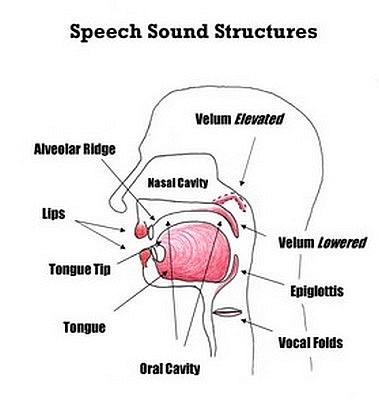
A syllable is a basic unit of written and spoken language. It is a unit consisting of uninterrupted sound that can be used to make up words. For example, the word hotel has two syllables: ho and tel. These will be marked here as in ho/tel.
Counting Syllables
To find the number of syllables in a word, use the following steps:
- Count the vowels in the word.
- Subtract any silent vowels, (like the silent e at the end of a word, or the second vowel when two vowels are together in a syllabl.e)
- Subtract one vowel from every diphthong(diphthongs only count as one vowel sound.)
- The number of vowels sounds left is the same as the number of syllables.

The number of syllables that you hear when you pronounce a word is the same as the number of vowels sounds heard. For example:
- The word came has 2 vowels, but the e is silent, leaving one vowel sound andone syllable.
- The word outside has 4 vowels, but the e is silent and the ou is a diphthong which counts as only one sound, so this word has only two vowel sounds and therefore, two syllables.
Kinds of Syllables
There are six different kinds of syllables in English:
- Closed Syllables: A closed syllable has one and only one vowel, and it ends in a consonant. Examples include in, ask, truck, sock, stretch, twelfth, and on.
- Open Syllables: An open syllable has one and only one vowel, and that vowel occurs at the end of the syllable. Examples include no, she, I, a, and spry.
- Silent-E Syllables: A silent-e syllable ends in an e, has one and only one consonant before that e, and has one and only one vowel before that consonant. Examples include ate, ice, tune, slope, strobe, andthese.
- Vowel Combination Syllables: A vowel combination syllable has a cluster of two or three vowels or a vowel-consonant unit with a sound or sounds particular to that unit. Examples include rain, day, see, veil,pie, piece, noise, toy, cue, and true.
- Vowel-R Syllables: A vowel-r syllable is one which includes one and only one vowel followed by an r, or one vowel followed by an r which is followed by a silent e, or a vowel combination followed by an r. Examples include car, or, care, ire, air, and deer.
- Consonant-L-E Syllables: In these syllables, a consonant is followed by le. The vowel sound in these syllables is the schwa sound that occurs before the l. Examples include -ble, -cle, -dle, -fle, and -gle.

Dividing Words Into Syllables
Dividing Words Into Syllables
There are four ways to split up a word into its syllables:
1. Divide between two middle consonants.
Split up words that have two middle consonants. For example:
hap/pen, bas/ket, let/ter, sup/per, din/ner, and Den/nis. The only exceptions are the consonant digraphs. Never split up consonant digraphs as they really represent only one sound. The exceptions are "th", "sh", "ph", "th", "ch", and "wh".
2. Usually divide before a single middle consonant.
When there is only one syllable, you usually divide in front of it, as in:
"o/pen", "i/tem", "e/vil", and "re/port". The only exceptions are those times when the first syllable has an obvious short sound, as in "cab/in".
3. Divide before the consonant before an "-le" syllable.
When you have a word that has the old-style spelling in which the "-le" sounds like "-el", divide before the consonant before the "-le". For example: "a/ble", "fum/ble", "rub/ble" "mum/ble" and "thi/stle". The only exception to this are "ckle" words like "tick/le".
4. Divide off any compound words,prefixes, suffixes and roots which have vowel sounds.
Split off the parts of compound words like "sports/car" and "house/boat". Divide off prefixes such at "un/happy", "pre/paid", or "re/write". Also divide off suffixes as in the words "farm/er", "teach/er", "hope/less" and "care/ful". In the word "stop/ping", the suffix is actually "-ping" because this word follows the rule that when you add "-ing" to a word with one syllable, you double the last consonant and add the "-ing".
http://www.phonicsontheweb.com/syllables.php. (n.d.). . Retrieved , from Phonics on the web
NOW YOU CAN SURF ON THIS LINKS:
http://www.vocabulary.co.il/syllables/syllable-patterns-lesson/
http://www.learninggamesforkids.com/vocabulary-games/syllables/syllable-patterns-lesson.html

 .
. 